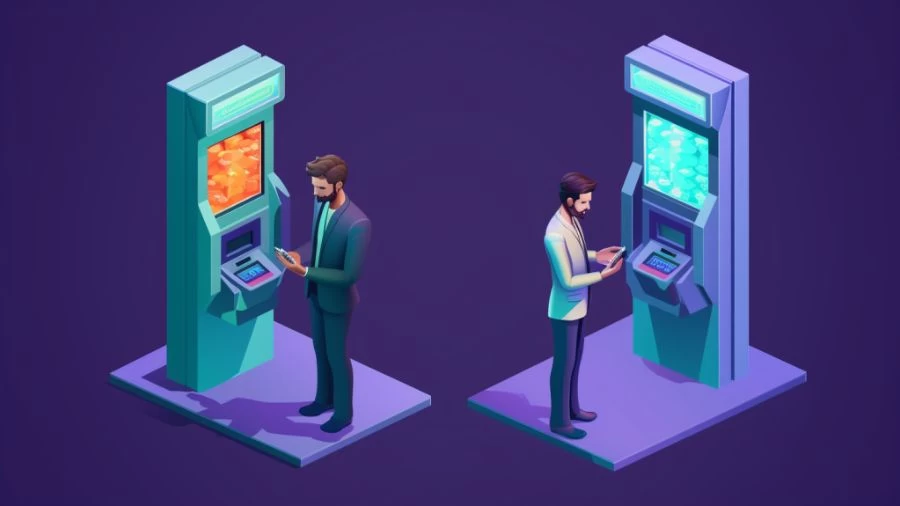
Available Balance vs Current Balance: Know the Differences
The available balance is the money you can spend immediately, excluding pending transactions, while the current balance includes all funds, including pending items in your account.
Updated Sep 19, 2023
On This Page
- Available Balance vs Current Balance
- What is Available Balance?
- What is Current Balance?
- Why is My Available Balance Higher Than My Current Balance?
- When will My Current Balance Become Available?
- What Does the Term "Current Balance" Signify on a Credit Card?
- How Dependable is the Available Balance?
- Which Balance Should I Trust When Initiating Payments?
Available Balance vs Current Balance
Current Balance: This is the total amount of money you have in your bank account right now. However, not all of it may be available for you to spend immediately. Some of it might be from checks you wrote or deposits you made that haven't gone through yet.
Available Balance: This is the amount of money you can actually use for spending at the moment. It's your current balance minus any pending transactions or holds on your account. If you don't have any pending stuff, your available balance and current balance will be the same.
But, if you use your debit card a lot or recently put a big check in your account, the two balances might be different because some money is on hold until those transactions are completed.
What is Available Balance?
The available balance is like the "spendable" amount in your bank account or on your credit card. It's the total money you can use right away without any restrictions. This balance only counts money that's been officially added to your account and deductions have been made for any withdrawals or payments.
For a credit card, it's called "available credit," which is how much you can borrow without going over your limit. To put it simply, it's your credit limit minus what you owe.
Your available balance updates constantly throughout the day and instantly reflects any electronic transactions like using your card or making online payments. However, it doesn't include pending transactions that haven't gone through yet, like when you write a check, which might take a few days to show up. So, when you check your account online, you'll often see two balances: the available balance, which is your spendable money, and the current balance, which includes everything, even pending stuff.
What is Current Balance?
Your current balance is the total amount of money in your bank account right now. This includes all the money you have, even if some of it hasn't been fully processed yet. For instance, if you wrote a check or made a credit card payment that hasn't gone through, it still counts in your current balance.
If your account hasn't had any recent activity, like transactions or deposits, your current balance might be the same as your available balance (the money you can spend). But if you've been doing things with your account, your spendable money might be different from your current balance.
Imagine you have a bank account, and your current balance is $1,000. You recently wrote a check for $200 to pay a friend, and they haven't cashed it yet. You also used your debit card to make a purchase for $100 at the grocery store yesterday.
Your current balance is $1,000 because that's the total amount of money you have in your account right now, including the $200 check and the $100 debit card purchase.
However, your available balance might be different. It would be $700 because your bank would subtract the $200 check (which hasn't been deducted yet) and the $100 debit card purchase (which has already been processed) from your current balance. This $700 is the amount you can spend right away without worrying about any pending transactions.
Why is My Available Balance Higher Than My Current Balance?
Your current balance can be higher than your available balance because of transactions that are still in the process of being completed. These pending transactions are not yet included in your current balance, but they will be once they're fully processed and added to your account history. Additionally, your available balance might include any credit you have available if you have a line of credit connected to your checking account. So, the difference between the two balances is often due to pending transactions and any credit options you have.
When will My Current Balance Become Available?
Your current balance is the total amount of money in your bank account right now, which may include pending transactions. If your account hasn't had any recent activity, your current balance might be the same as your available balance.
The key point is that the available balance is the amount of money you can withdraw or use right away. It doesn't include pending transactions. So, the current balance doesn't exactly "turn into" the available balance; rather, the available balance represents how much money you can access immediately without waiting for pending transactions to clear.
What Does the Term "Current Balance" Signify on a Credit Card?
The "Current Balance" on a credit card is the total amount of money that you owe to the credit card company at a specific moment. It's different from the "Statement Balance," which is the total you owe at the end of your monthly billing cycle, including new charges and payments made during that cycle.
The Current Balance can be larger than the Statement Balance because it includes any new charges or payments made after the billing cycle ended. It's like a real-time snapshot of what you owe at any given time, whereas the Statement Balance is a summary of your account activity for the previous month.
How Dependable is the Available Balance?
Your available balance is usually a reliable indicator of the money you can spend, but it's not always 100% accurate. Here's why:
- Pending Transactions: Sometimes, when you make a purchase with your debit card, the merchant may not have reported it to your bank yet. So, that amount may not show up in your available balance right away.
- Outstanding Checks: If you've written checks that haven't been cashed by the recipients, they won't be deducted from your available balance until they're cashed.
- Upcoming Payments: If you have upcoming bills or payments that are scheduled to come out of your account soon but haven't been processed yet, they won't be reflected in your available balance until they are.
Also, depending on the type of deposit you make (like a check), the bank might place a hold on some of the funds. Normally, a portion of the money becomes available within a day or two, while the rest might take a bit longer.
In some situations, especially with new accounts or large deposits, the bank might put an "exception hold" on the funds, which can last for several days. It's important to be aware of these holds and when your funds will be fully available so you can make informed financial decisions.
Which Balance Should I Trust When Initiating Payments?
When you're about to make a payment or withdraw money, it's a good idea to trust your available balance. Here's why:
Available Balance: This tells you the real amount of money you can use at that moment. It considers pending transactions and holds, so it's a more accurate representation of what's actually available for spending.
Overdraft Prevention: Relying on your available balance helps prevent overdrawing your account, which can lead to overdraft fees. Overdraft protection can cover transactions when you don't have enough money, but it might still result in overdraft fees.
NSF Fees: If you don't have overdraft protection and your account balance goes negative, you could face NSF (Non-Sufficient Funds) fees when the bank returns the unpaid transaction.
Available Balance vs Current Balance - FAQs
1. What is the Current Balance on a credit card?
The Current Balance on a credit card is the total amount you owe to the issuer.
2. Why might my Current Balance be higher than my Available Balance?
Pending transactions or outstanding checks can make your Current Balance higher than your Available Balance.
3. When should I trust my Available Balance for making payments or withdrawals?
Use your Available Balance to prevent overdrawing your account and avoid potential fees.
4. What causes a difference between Available Balance and Current Balance?
Pending transactions, outstanding checks, and holds contribute to the variance between the two balances.
5. How can I avoid overdraft and NSF fees?
Regularly monitor your account, rely on your Available Balance, and keep a buffer in your checking account to prevent fees.




